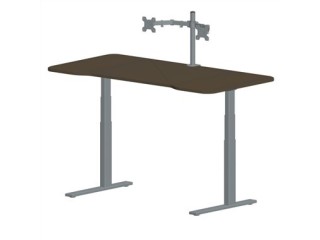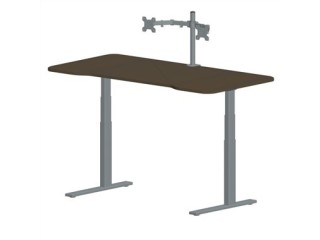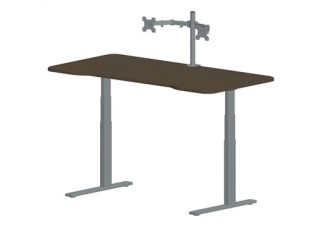Why Rubber is Used for Vibration and Shock Isolation Aziendale
2 years ago Industriale Bari 295 Visto Reference: 146Location: Bari
Prezzo: Contattaci
We carry an extensive line of Lord mounts, which are designed to manage the vibration, noise and shock that can cause mechanical systems to fail. The key to isolating vibration is to reduce its transmission to a component or supporting structure. In a nutshell, the rubber in a mount acts as a Rubber Spring with its own natural frequency, and this frequency partly depends on the stiffness of the spring. But why is rubber such an ideal material in this type of situation?
The answer to this question requires knowing some basic facts about both natural and synthetic rubbers. This includes defining what we commonly call rubber. Lord Corporation’s Design Monograph DM1101a (available upon request) states, it “is a synthetic or natural material whose long, coiled, high-molecular weight chains have been cross-bridged by certain chemical ingredients to form a network. It is characterized by the ability to accept and recover from extreme deformation of 200 percent or more. The term elastomer includes natural rubber and the many synthetic materials that possess rubber-like properties.” The diagram below shows the chemical structure of natural rubber, cis-polyisoprene. Natural rubber is composed of long chains consisting of at least 10,000 similar chemical units.
In addition, rubbers used for industrial and engineering applications generally are compounded with fillers that affect the properties of the vulcanizate. The fillers usually consist of carbon black, and the formulation used with greatly affect the properties of the rubber, such as tear and abrasion resistance, modulus, hysteresis and creep. Also, other chemicals may be added which protect the rubber from sunlight, ozone and oxygen.
The ability to formulate rubbers with specific properties makes it so versatile and useful in an almost limitless number of applications. Natural rubber in particular is especially valuable as Rubber Springs material because of its longevity, resilience, low cost, resistance to a wide range of temperatures, and ability to bond to metals. Natural rubber is used in many of our Lord Mounts because of these characteristics and its ability to reduce the transmission of both vibration and noise in harsh environments. For example, it can resist the the heat and chemicals encountered in vehicle engines, and its resistance to swelling when immersed in liquids means it can also successfully withstand underwater conditions for many years.
What is a Rubber Gasket?
Rubber Gaskets are elastic components used for mechanically sealing the microscopic gap between two mating surfaces or joints. Examples of these surfaces are flange faces of piping and fittings, mating surfaces of an automotive cylinder head and engine block, tank rim and cover, door edges, frames, and so on. Rubber gaskets seal surfaces by flowing in and filling the surface irregularities of rigid parts. The sealing effect is created by the parts exerting compressive forces which plastically deform the gasket.
The sealing capability of rubbers is attributed to their elastomeric nature. Rubbers, natural or synthetic, belong to a family of materials called elastomers. Elastomers are classes of polymers that have a highly elastic nature created by cross-linking long polymer chains into amorphous structures. The intermolecular forces between the polymer chains are relatively weak; this allows them to be reconfigured upon application of stress. Because of this property, an elastomeric Rubber Flange Gaskets can easily conform to the profile of the surfaces creating a tight seal.
Advantages of Rubber Gaskets
Rubber gaskets, compared to their metallic and other non-metallic counterparts, offer several benefits due to their unique set of properties. Elasticity, or the ability to be deformed, is the key attribute of rubber that allows it to form tight seals. Rubber gaskets are also easier to process and can be formulated from different raw materials. Below are some of the advantages of rubber gaskets.
Vibrating Screen Rubber Gaskets are manufactured by combining raw rubber and additive materials and forming them into the desired profile. Like any other polymers, rubbers have excellent formability. In its liquid or uncured state, whether it be the thermosetting or thermoplastic type, rubber flows easily into molds and dies. Once hardened or cured, the material can be easily cut or machined to near-perfect dimensions. In contrast with metallic and other non-metallic gasket types, the production of rubber gaskets requires low heat and pressure. Thus, cheaper tooling is used, and lower operating costs are involved.














